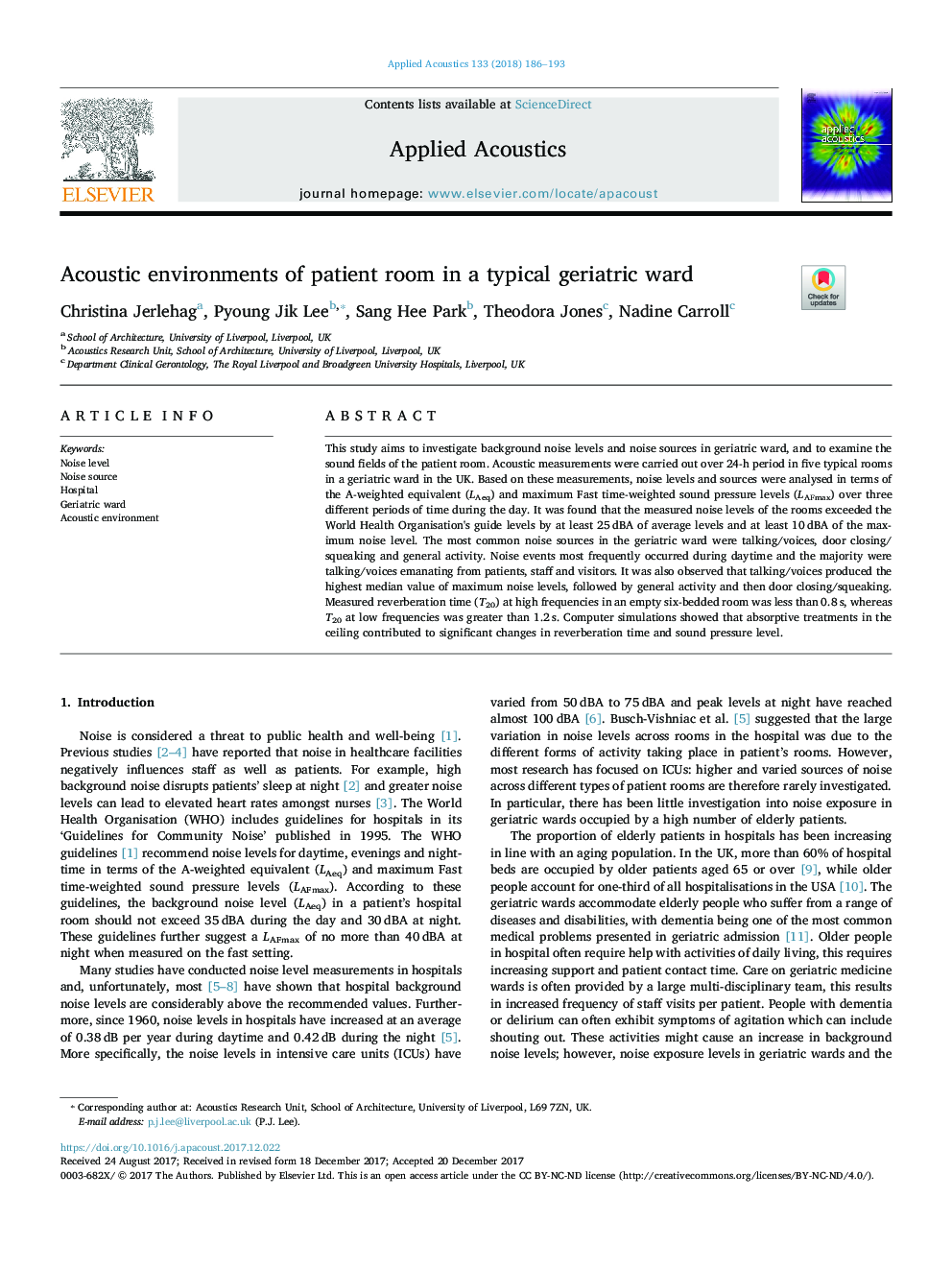| Article ID | Journal | Published Year | Pages | File Type |
|---|---|---|---|---|
| 7152325 | Applied Acoustics | 2018 | 8 Pages |
Abstract
This study aims to investigate background noise levels and noise sources in geriatric ward, and to examine the sound fields of the patient room. Acoustic measurements were carried out over 24-h period in five typical rooms in a geriatric ward in the UK. Based on these measurements, noise levels and sources were analysed in terms of the A-weighted equivalent (LAeq) and maximum Fast time-weighted sound pressure levels (LAFmax) over three different periods of time during the day. It was found that the measured noise levels of the rooms exceeded the World Health Organisation's guide levels by at least 25â¯dBA of average levels and at least 10â¯dBA of the maximum noise level. The most common noise sources in the geriatric ward were talking/voices, door closing/squeaking and general activity. Noise events most frequently occurred during daytime and the majority were talking/voices emanating from patients, staff and visitors. It was also observed that talking/voices produced the highest median value of maximum noise levels, followed by general activity and then door closing/squeaking. Measured reverberation time (T20) at high frequencies in an empty six-bedded room was less than 0.8â¯s, whereas T20 at low frequencies was greater than 1.2â¯s. Computer simulations showed that absorptive treatments in the ceiling contributed to significant changes in reverberation time and sound pressure level.
Related Topics
Physical Sciences and Engineering
Engineering
Mechanical Engineering
Authors
Christina Jerlehag, Pyoung Jik Lee, Sang Hee Park, Theodora Jones, Nadine Carroll,
